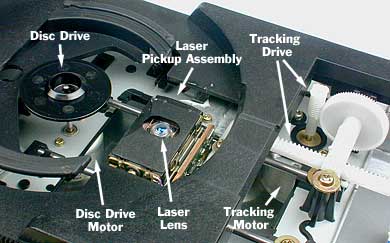
Cassette tapes sound good when they are new. But after a while, they start to sound scratchy. A compact disc, or CD, produces much better sound. It is played using a special light called a laser beam. Only the beam of light touches the CD, so it stays like new.
Sound is stored on a CD in a digital (numerical) code-a string of 0’s and 1’s. When a CD is made a microphone turns sound vibrations into electrical signals. Then a machine changes the signals into a digital code.
This code is fed into a powerful laser. As a blank disc turns, the laser cuts billions of tiny pits that represent the digital code into the surface of the disc.
Inside a CD player is another, less powerful, laser. When the CD is played, the laser reads the position of the pits. The laser reads from the centre to the edge of the disc as the CD turns. These pulses of light are turned into electrical signals. The signals make the speakers vibrate. Then you hear the sounds.
Inside a CD player, a laser beam shines on a mirror and through a lens onto the pits on the CD. When the beam hits a pit, the light is scattered. When it hits between pits, the light is reflected straight back. A sensor reads the patterns of reflected light and turns the patterns into electrical signals. These signals are used to produce sounds.
Picture Credit : Google

